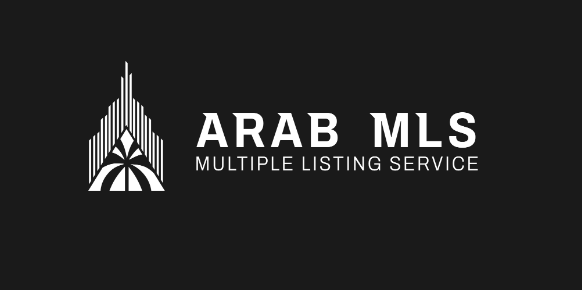In the fast-paced world of real estate, Multiple Listing Service (MLS) applications play a crucial role in providing real-time data on properties, enabling transactions, and connecting buyers, sellers, and agents. As real estate professionals increasingly rely on mobile and web technologies, ensuring cross-platform compatibility in MLS applications has become a necessity rather than a luxury.
Cross-platform compatibility refers to an application’s ability to function seamlessly across different operating systems and devices, such as Windows, macOS, Android, iOS, and various web browsers. For MLS applications, this capability is vital for maintaining a consistent user experience, reducing development costs, and increasing accessibility for diverse users. This article explores the importance, challenges, and best practices in achieving cross-platform compatibility in MLS applications.
Why Cross-Platform Compatibility Matters in MLS Applications
Diverse User Base
Real estate professionals use a wide range of devices and platforms. An agent may access the MLS on a Windows desktop in the office, an iPhone on the go, or an Android tablet at an open house. Ensuring compatibility across these platforms is essential to meet user expectations and support productivity.
Consistent User Experience
A consistent user interface (UI) and user experience (UX) across devices strengthen brand identity and minimize the learning curve. For MLS applications, this means agents can switch from one device to another without having to relearn how the system works.
Cost and Time Efficiency
Developing a cross-platform MLS application using unified codebases (e.g., React Native, Flutter) can significantly reduce development time and maintenance costs. It avoids the need for separate development teams for Android, iOS, and web platforms.
Broader Market Reach
Cross-platform compatibility increases accessibility, enabling broader market penetration. This is especially important for nationwide or international MLS systems that need to accommodate different regional preferences and device usage trends.
Challenges in Achieving Cross-Platform Compatibility
Despite its benefits, building cross-platform MLS applications presents several technical and design challenges:
Platform-Specific Features
Each platform offers unique features and capabilities (e.g., Apple’s Face ID or Android’s Google Maps integration) that may not be available or behave differently on other platforms. Integrating such features while maintaining a uniform experience is complex.
Performance Optimization
Cross-platform frameworks often face criticism for lower performance compared to native applications. Real estate agents need fast-loading maps, high-resolution images, and smooth data interactions — all of which require careful optimization.
UI/UX Inconsistencies
Although frameworks attempt to abstract away platform differences, subtle UI and behavior discrepancies can still arise. Buttons, navigation gestures, and animations might not look or feel the same across platforms.
Data Security and Compliance
MLS systems handle sensitive property and personal data. Ensuring data security across platforms and complying with regulations (such as GDPR or local data laws) adds another layer of complexity.
Best Practices for Ensuring Cross-Platform Compatibility
Use Cross-Platform Development Frameworks
Modern frameworks like React Native, Flutter, and Xamarin allow developers to write code once and deploy it across multiple platforms. These frameworks offer native performance and extensive libraries that support MLS-specific needs like map integration, push notifications, and offline functionality.
Adopt Responsive Design Principles
MLS applications should use responsive layouts that adapt to different screen sizes and orientations. Tools like CSS Grid, Flexbox (for web), and platform-specific layout widgets in mobile frameworks help maintain visual consistency.
Implement Progressive Web Apps (PWAs)
For MLS applications targeting web users, Progressive Web Apps offer a native-like experience through browsers. PWAs can work offline, send push notifications, and install on devices, bridging the gap between web and mobile functionality.
Perform Extensive Testing
Testing is critical. Use emulators and physical devices to test across platforms. Automated testing tools like Appium, Detox, or Selenium help catch compatibility issues early. Regular user acceptance testing (UAT) with real estate professionals also ensures the app meets practical usage requirements.
Leverage API-First Architecture
An API-first approach decouples the backend from the frontend. This allows the same backend services to power web, mobile, and desktop versions of the MLS application, promoting scalability and reducing code duplication.
Monitor and Iterate
Even after launch, monitor performance and user feedback. Tools like Firebase Crashlytics, Sentry, and analytics platforms provide real-time insights into how different platforms perform and where issues might arise.
Real-World Example: Zillow and Realtor.com
Leading MLS platforms like Zillow and Realtor.com exemplify effective cross-platform design. They provide consistent interfaces, fast search capabilities, and seamless synchronization across devices. These companies invest heavily in responsive design, continuous testing, and real-time data integration to ensure agents and buyers have a reliable experience no matter the device.
Future Trends in Cross-Platform MLS Development
AI and Voice Integration
Cross-platform voice assistants (e.g., Siri, Google Assistant) are being used to search for properties and schedule showings. MLS applications must integrate such technologies consistently across platforms.
Augmented Reality (AR)
As AR becomes mainstream, especially in virtual home tours, ensuring AR features work uniformly across Android and iOS devices is becoming a new frontier in compatibility.
Edge Computing and Offline Access
Improved offline functionality — such as cached property listings and offline map navigation — will enhance usability in areas with poor internet coverage, especially for mobile agents.
Conclusion
Cross-platform compatibility is no longer optional in MLS applications. With diverse user expectations, rapid technological advancements, and the high stakes of real estate transactions, MLS developers must prioritize compatibility from day one. By leveraging modern development frameworks, embracing responsive design, and committing to continuous testing, it’s possible to deliver powerful, consistent, and accessible MLS tools that work anywhere, anytime.
As the real estate industry continues to digitize, those who ensure seamless cross-platform experiences will be best positioned to lead the market.
Frequently Asked Questions
Why is cross-platform compatibility important for MLS applications in the real estate industry?
Cross-platform compatibility ensures that MLS applications function smoothly across different operating systems (Windows, macOS, Android, iOS) and device types (desktops, tablets, smartphones). In real estate, professionals often need to access listings on the go, whether in the office or at client meetings, using various devices. Without compatibility, users may face inconsistent experiences, such as UI issues or limited functionality, leading to reduced productivity and frustration.
Moreover, cross-platform compatibility broadens accessibility, allowing a wider user base to engage with the MLS system regardless of their device choice. This increases market reach and supports remote or mobile work environments, which are increasingly common in real estate. Ultimately, it helps maintain a consistent brand experience and reduces development and maintenance costs by enabling unified codebases instead of building separate native apps.
What are the main challenges developers face when building cross-platform MLS applications?
Developers encounter several key challenges:
-
Platform-Specific Features: Each platform has unique functionalities and APIs (such as iOS’s Face ID or Android’s native mapping services). Integrating these while keeping the app consistent across platforms is difficult.
-
Performance Issues: Cross-platform frameworks sometimes cannot match the speed or responsiveness of native apps, which is critical when MLS apps display high-resolution property images or interactive maps.
-
UI/UX Inconsistencies: Different platforms have different design conventions and interaction models (e.g., gestures on iOS vs. Android), making it challenging to create a uniform experience.
-
Data Security and Compliance: Handling sensitive personal and property data requires robust encryption and adherence to legal regulations, which can vary by region and platform.
-
Testing Complexity: Ensuring flawless performance across multiple devices and OS versions requires extensive testing, which is resource-intensive.
Which development frameworks are most effective for creating cross-platform MLS applications, and why?
Some of the most effective cross-platform development frameworks for MLS applications include:
-
React Native: Allows developers to write JavaScript code that runs on both iOS and Android, with near-native performance. It has a large community, mature libraries, and easy integration with native modules when needed.
-
Flutter: Google’s UI toolkit that uses the Dart language. It provides high performance by compiling to native code and offers beautiful, customizable UI components that work consistently across platforms.
-
Xamarin: Uses C# and .NET to build apps for Android, iOS, and Windows. It’s well-suited for teams already experienced with Microsoft technologies and allows sharing code across mobile and desktop platforms.













